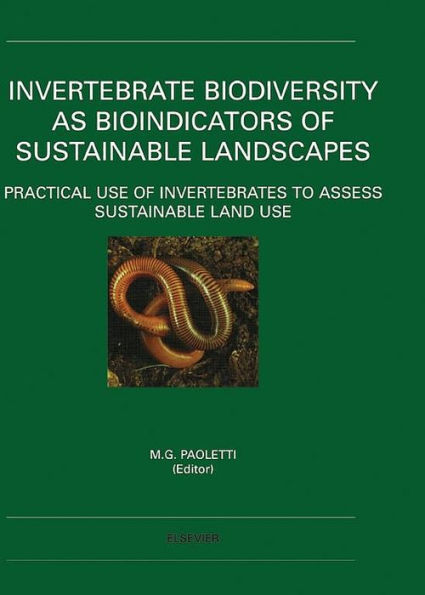Table of Contents
Foreword (M.G. Paoletti). Using bioindicators based on biodiversity to assess landscape sustainability (M.G. Paoletti).The ecological role of biodiversity in agroecosystems (M.A. Altieri). Biodiversity evaluation in agricultural landscapes: above-ground insects (P. Duelli, M.K. Obrist and D.R. Schmatz).Bacterial diversity in agroecosystems (A.C. Kennedy). Biodiversity of arbuscular mycorrhizal fungi in agroecosystems (D.D. Douds Jnr., P.D. Millner). Soil protozoa as bioindicators: pros and cons, methods, diversity, representative examples (W. Foissner). Nematode diversity in agroecosystems (G.W. Yeates, T. Bongers). The role of earthworms for assessment of sustainability and as bioindicators (M.G. Paoletti). Woodlice (Isopoda: Oniscidea): their potential for assessing sustainability and use as bioindicators (M.G. Paoletti, M. Hassall).Use of soil dwelling Diptera (Insecta, Diptera) as bioindicators: a review of ecological requirements and response to disturbance (J. Frouz). Carabid beetles in sustainable agriculture: a review on pest control efficacy, cultivation impacts and enhancement (B. Kromp).Spiders (Araneae) useful for pest limitation and bioindication (P. Marc, A. Canard, F. Ysnel).Diversity of Heteroptera in agroecosystems: role of sustainability and bioindication (G. Fauvel). Neuroptera in agricultural ecosystems (M. Stelzl, D. Devetak). Biodiversity of predaceous coccinellidae in relation to bioindication and economic importance (G. Iperti).Syrphidae: can they be used as environmental bioindicators? (D. Sommaggio). Staphylinid beetles as bioindicators (J. Bohac). Pollinators as bioindicators of the state of the environment: species, activity and diversity (P.G. Kevan). Predatory mites (Gamasina, Mesostigmata) (H.H. Koehler). Oribatid mite biodiversity in agroecosystems: role for bioindication (V. M. Behan-Pelletier). Ants as bioindicators of soil function in rural environments (L.A. Lobry de Bruyn).



